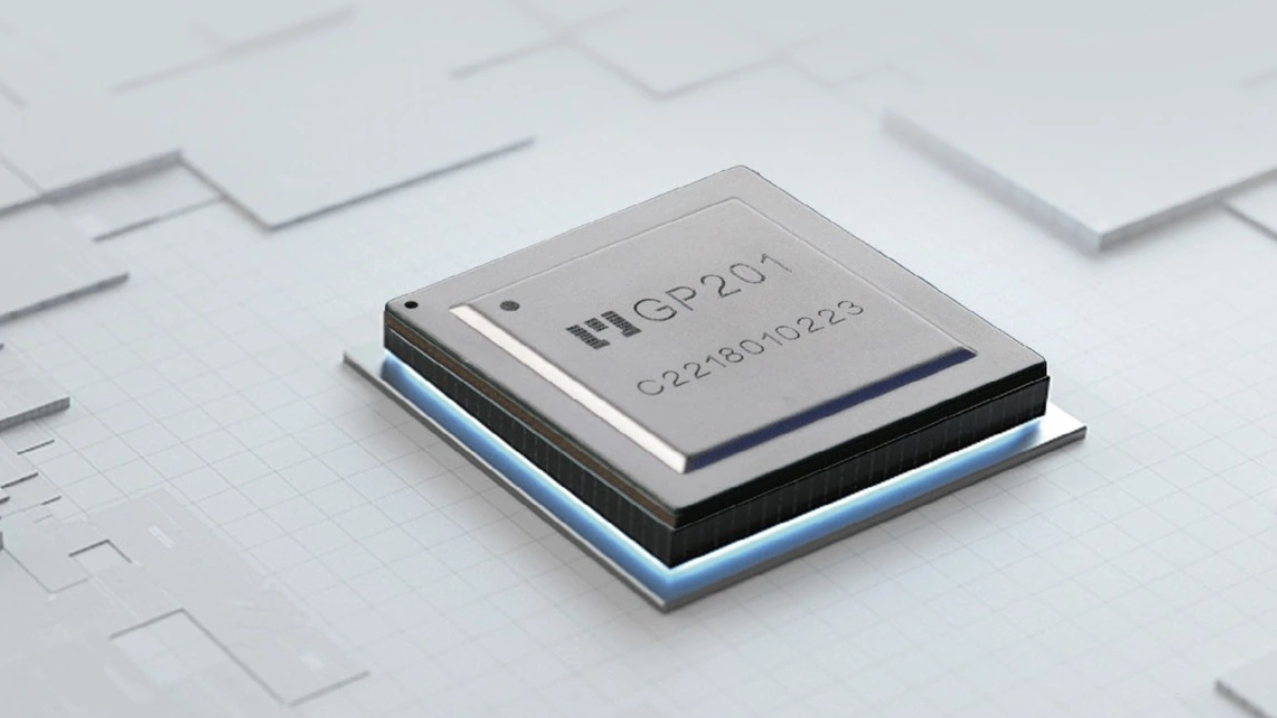
A new challenger has entered the battle for Chinese GPU and graphics card dominance. Lingjiu Microelectronics, creators of the brand-new GP201 graphics card, have apparently matched the performance of AMD's decade-old integrated GPU. The card can't be found on any U.S. shopping websites, yet, but IT Home reports it has begun mass-production and is available for purchase in China. Lingjiu's press deck shows incredible performance... when compared to the AMD E8860, an integrated graphics card from ten years ago. It's not going to topple the best graphics cards any time soon, in other words.
Lingjiu Microelectronics, a company so young it doesn't even have its own Wikipedia article, brings five models of their GP201 to market, in 2-slot, 1-slot, and MXM laptop form factors. The GP201 boasts a base clock of 1.2 GHz, single precision floating point performance of 1.2 TFLOPS, 2GB DDR4 VRAM, and power consumption of up to 30W. The card only communicates at PCIe 3.0 rates, but it does claim compatibility with most major Chinese processors and operating systems. The specs sheet also notes that the graphics card is "compatible with VESA" — presumably DisplayPort and AdaptiveSync, though it's not immediately clear which standard is meant.
If these numbers seem unimpressive, it's because they are. Nvidia's lowest-end release of 2017, the GT 1030, is commonly found on eBay for below $50 and matches the GP201 in clock speed, TFLOPS, and power consumption. And that's only on-paper specs — the GT 1030 uses mature Nvidia drivers, while Lingjiu is highly unlikely to match that level of tuning for many years (just ask Intel about GPU drivers). But in fairness to Lingjiu, it did succeed at getting a graphics card into production in only its third year of existence, while many previously-announced Chinese graphics cards died before ever reaching the market.
Lingjiu also finds victory in beating competitor Loongson to the punch in the low-end GPU market this year, who promised their new release in Q3 2024 would put up RX 550 numbers, a card that is only a hair faster than the GT 1030. But both Lingjiu and Loongson (and any other Chinese GPU manufacturers that might crop up) will need to work hard if they want to challenge their largest competitor in the domestic Chinese market, Moore Threads, whose flagship GPU competes on paper against the RTX 3060 Ti — though its weak driver support prevents this claim from truly being valid.
In the wake of American tariffs, sanctions, and blockades on China's tech sector in the Chip War (a title the Biden administration disagrees with), China is doubling down on tech independence. With a stated goal of getting all state-owned entities onto exclusively domestic computers and components by 2027, the Chinese government has a pressing need for domestic graphics cards.
Unfortunately for the CCP, the GPU market has enjoyed a unique duopoly between Nvidia and AMD for decades, a wall even Intel can't quite seem to break with their Arc Alchemist GPUs, which at best compete with mainstream AMD and Nvidia GPUs from the previous generation. You can see where things stand right now in our GPU benchmarks hierarchy. Time will tell if China can truly break out in the graphics market, or if Nvidia will continue its export dominance until the end of computing.







